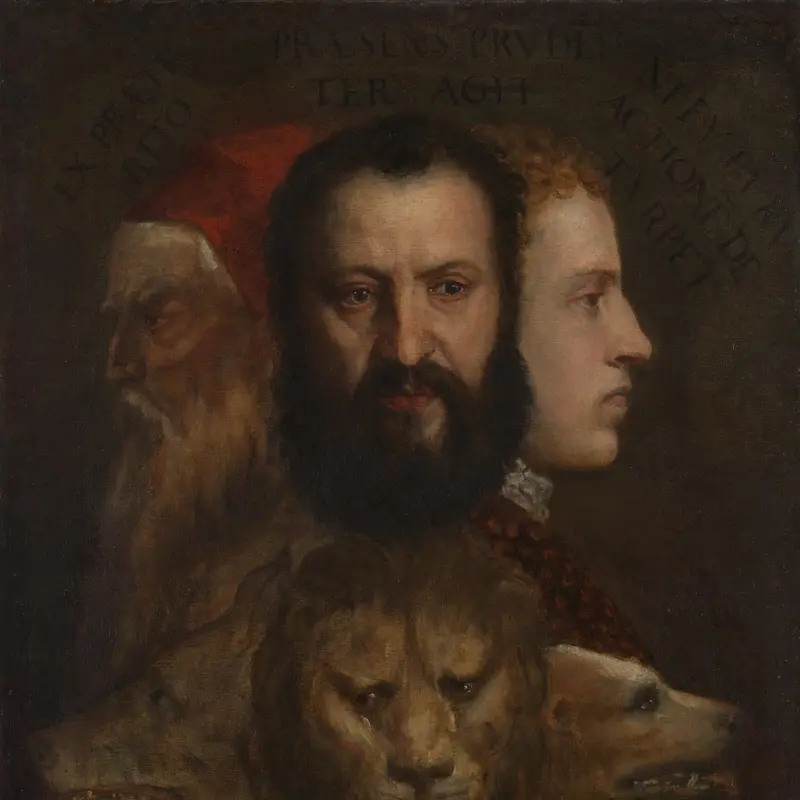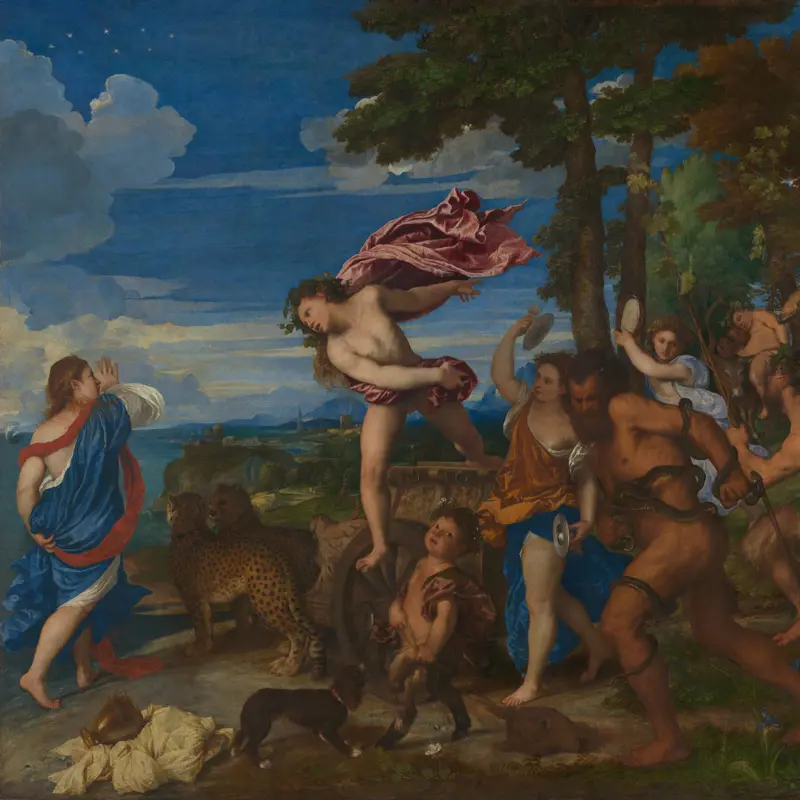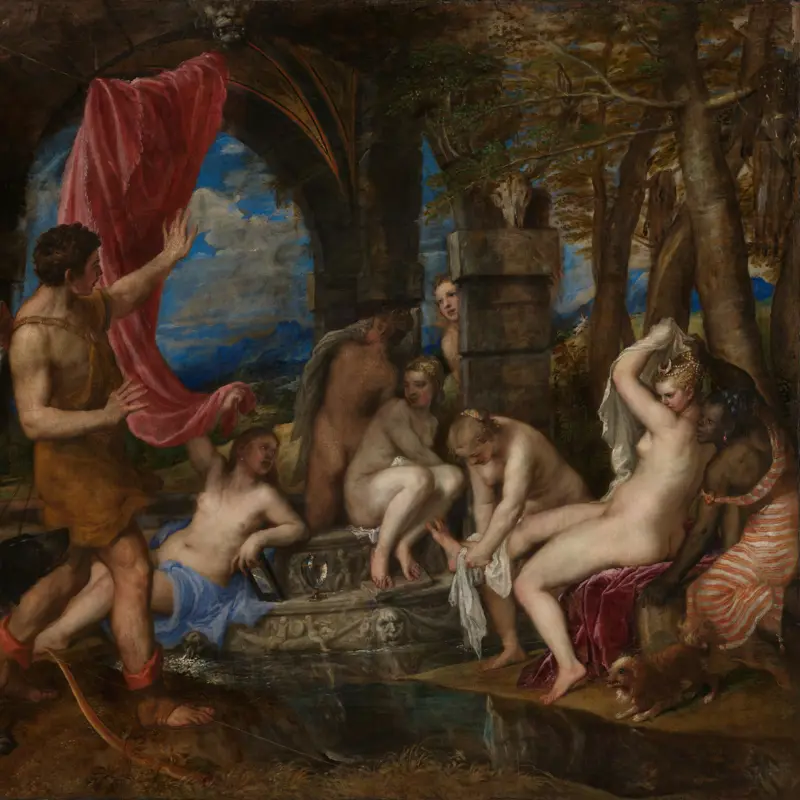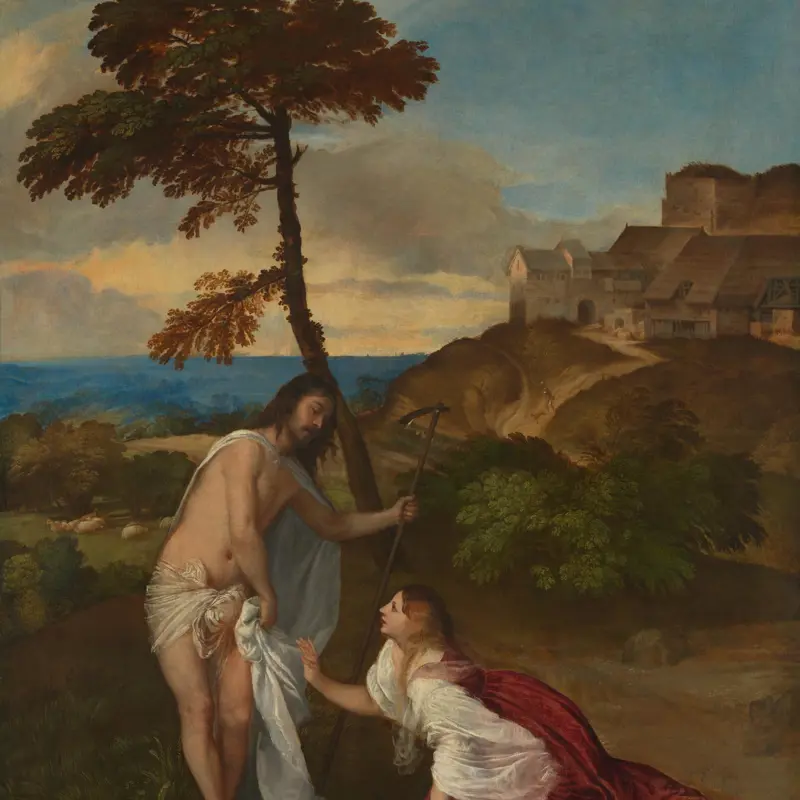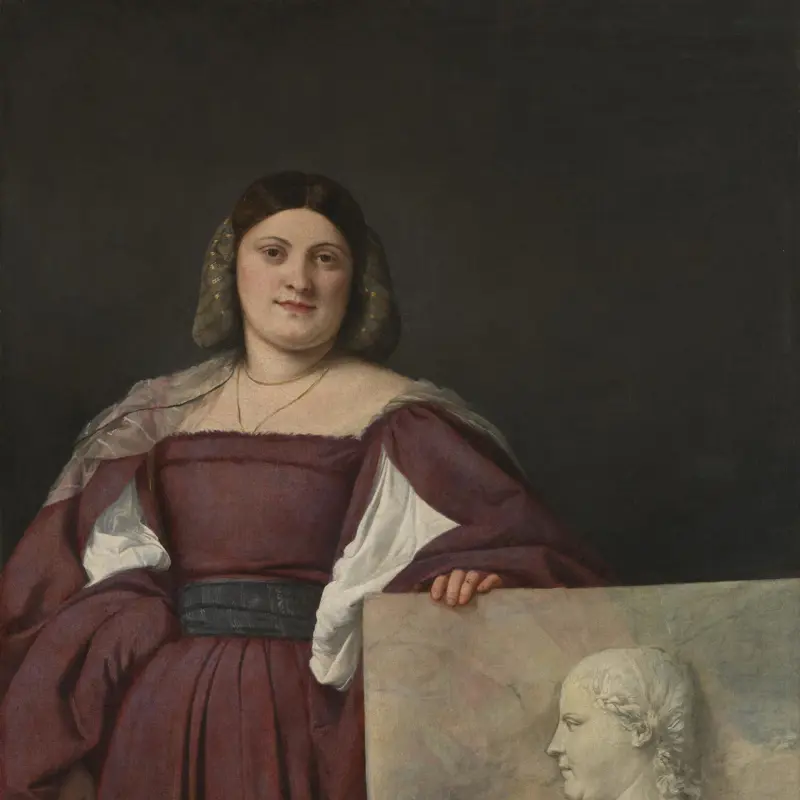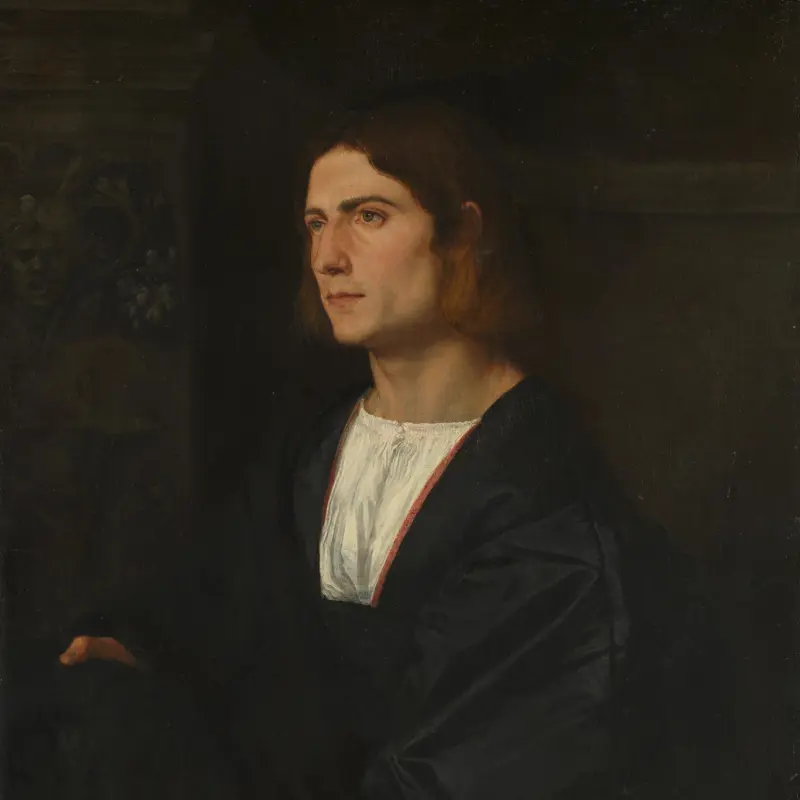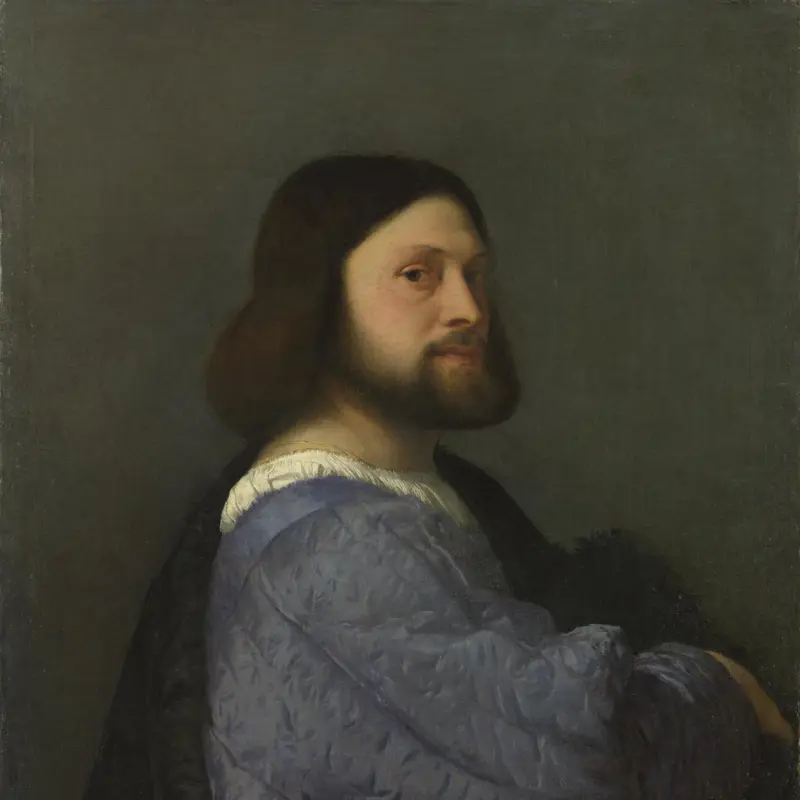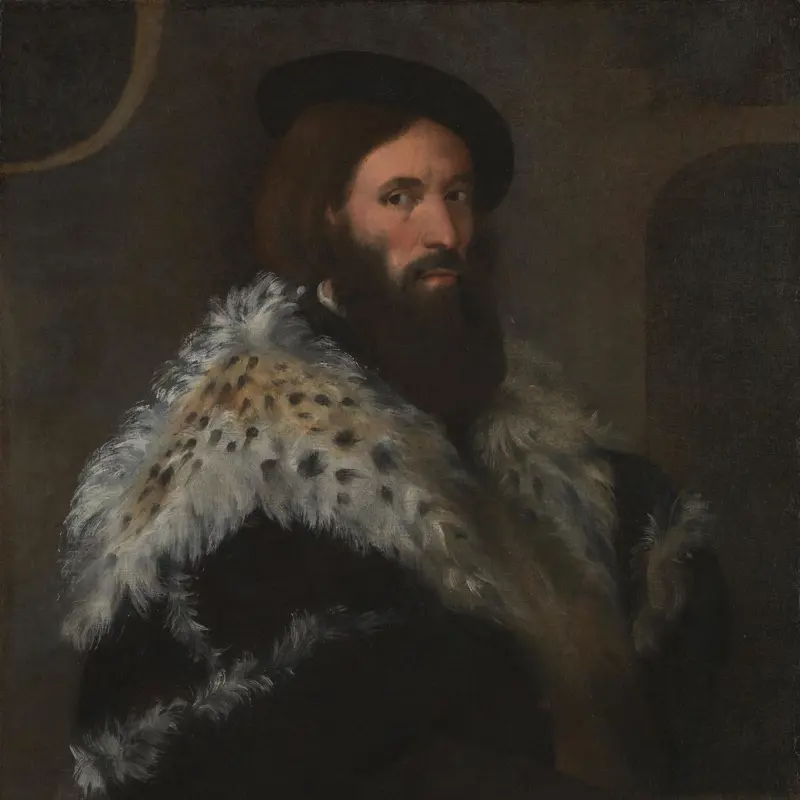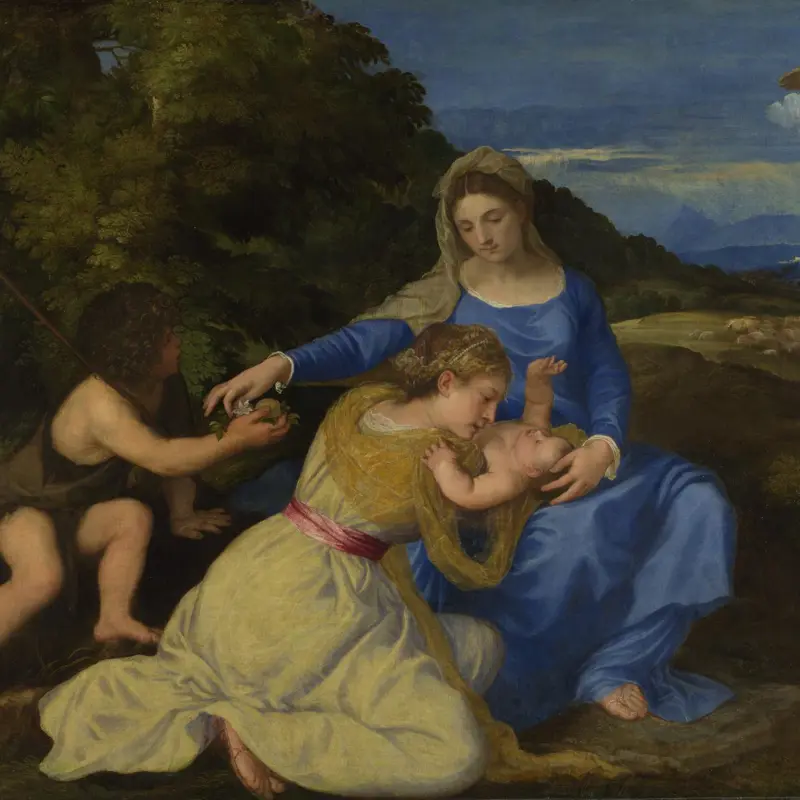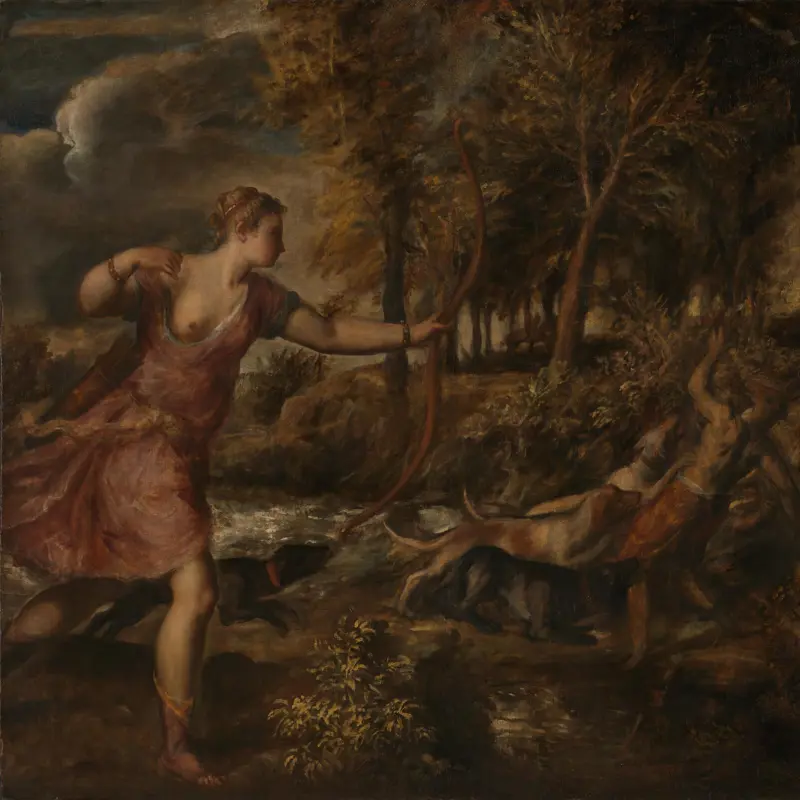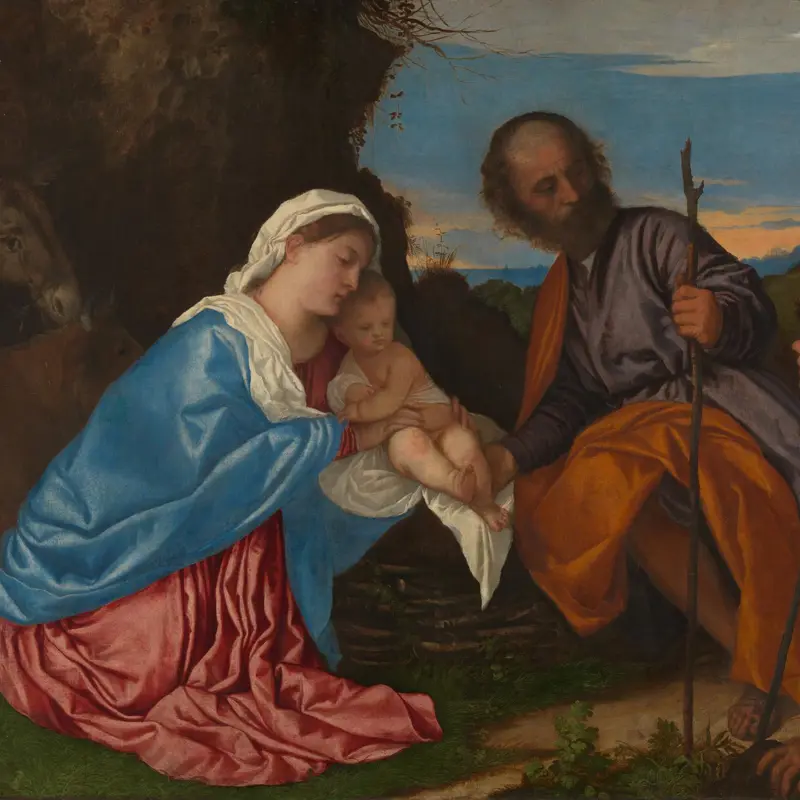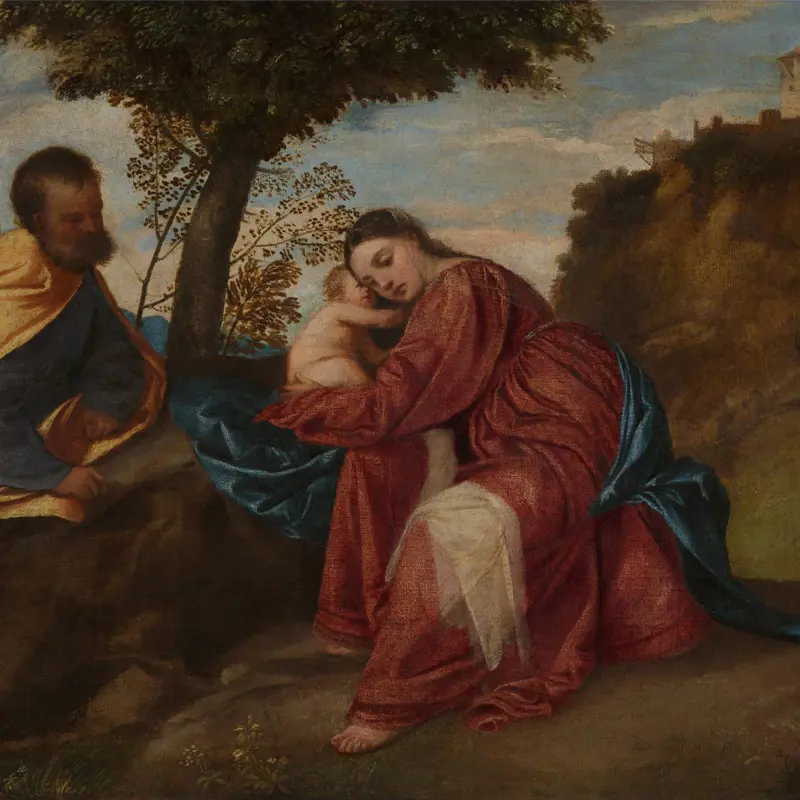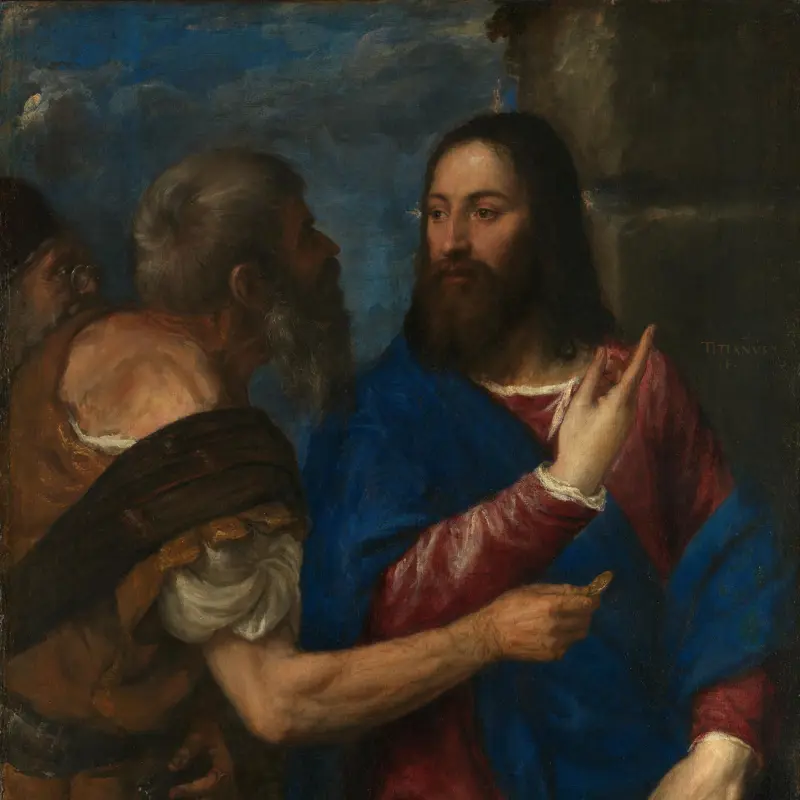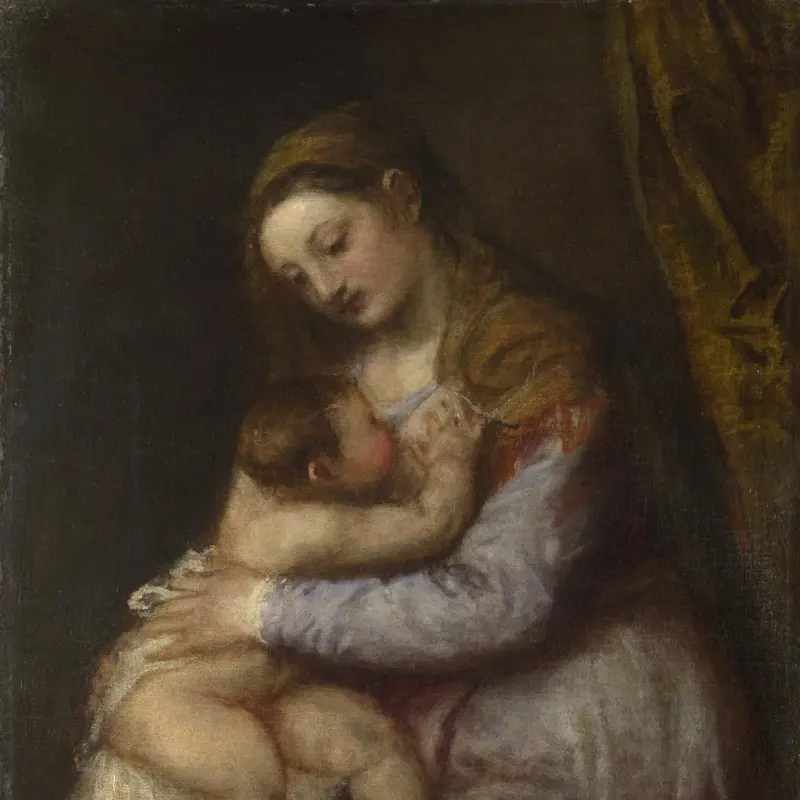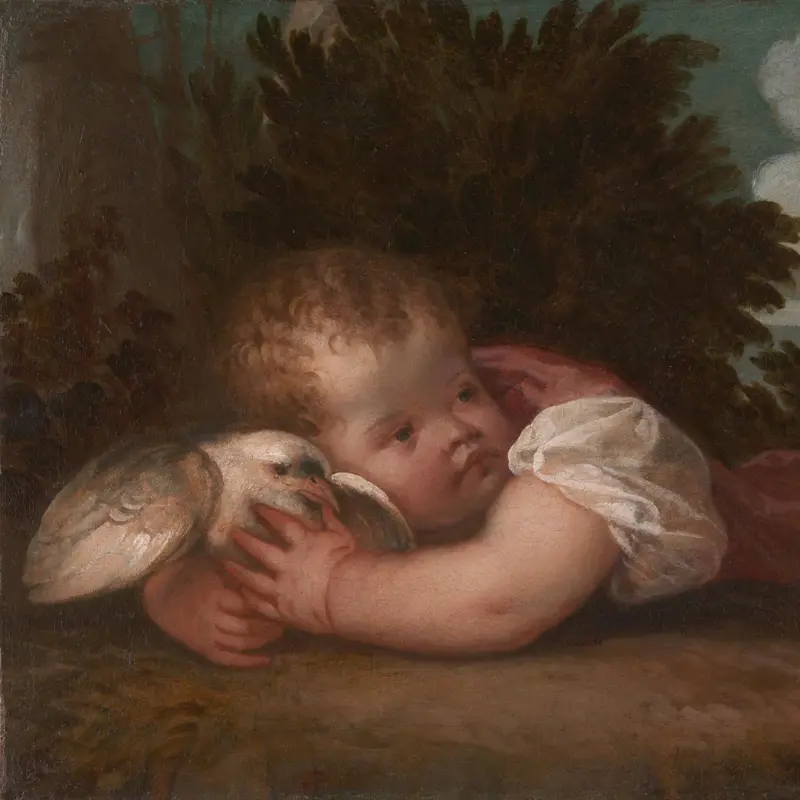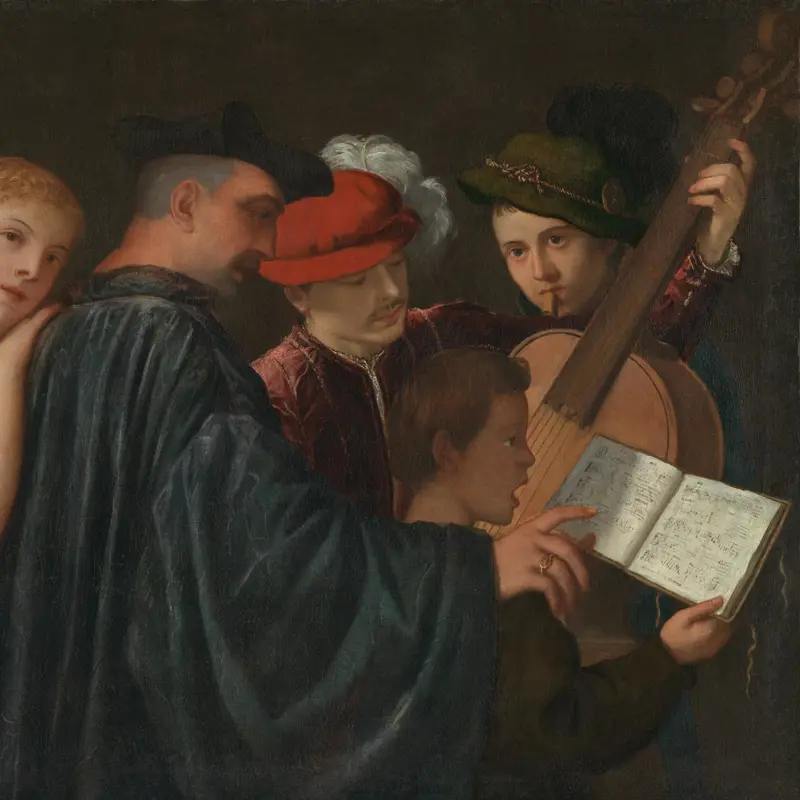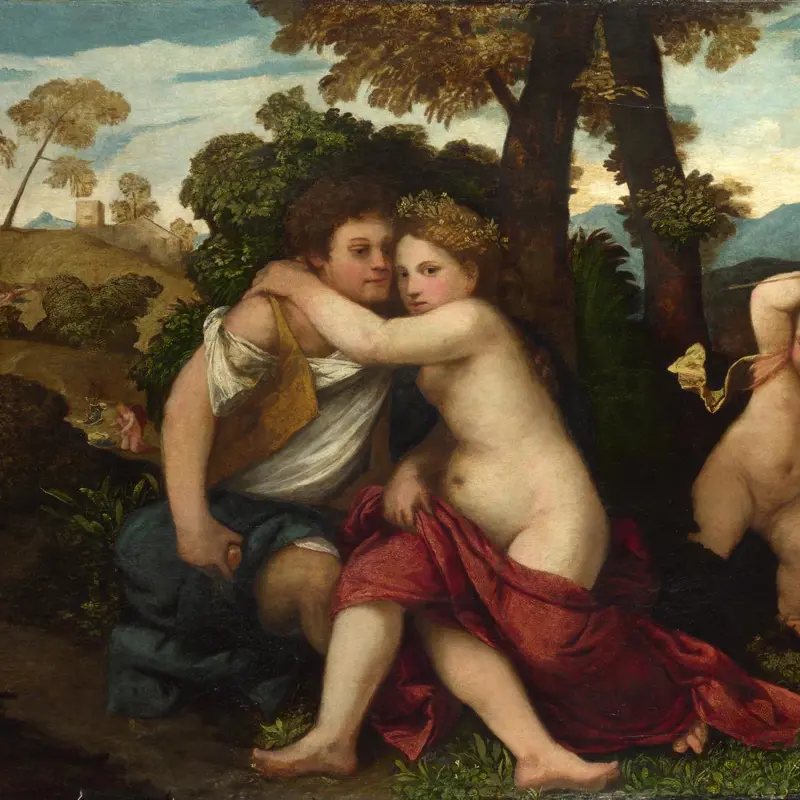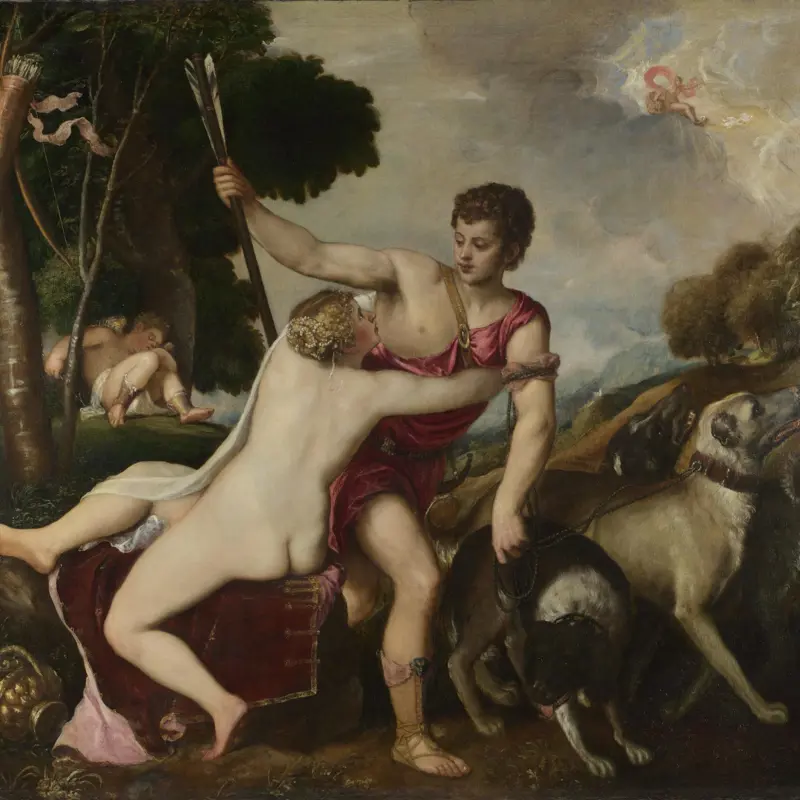Titian, 'Diana and Callisto', 1556-9
About the work
Overview
The nymph Callisto was the favourite of Diana, virgin goddess of the hunt. Jupiter, king of the gods, noticed her beauty and disguised himself to seduce her. Titian has painted the moment Diana forces Callisto to strip and bathe after hunting and discovers her pregnancy. The drama is heightened by Titian’s free and expressive brushwork. The contours of the figures dissolve as the thinnest of dragged brushstrokes are swept over the surface of the canvas, contributing to the sense of dynamism and movement.
Titian painted Diana and Callisto and Diana and Actaeon (co-owned by the National Gallery and the National Galleries of Scotland) for his most powerful patron, King Philip II of Spain, between 1556 and 1559. The pictures, based on the Roman poet Ovid’s Metamorphoses, were designed to be displayed together and have remained together throughout their history. The background landscapes and the stream in their foregrounds appear to run from one painting to the other and elements and poses are echoed, creating a rhythm across both canvases.
Audio description
Listen to an audio description of Titian's 'Diana and Callisto'
Transcript
This is a description of 'Diana and Callisto' painted between 1556 and 1559 by the Venetian artist, Tiziano Vecellio – or Titian, as he is better known. A work of oil on canvas, this is a large painting, over 2 metres wide and about 1.8 metres tall. It has a thick, large gold frame which is decorated with flowing patterns and foliage.
Painted for Philip II the King of Spain, it was part of a series Titian called The Poesie, which depicts various scenes from Ovid’s Metamorphoses.
This painting, 'Diana and Callisto', depicts eleven women, most of them nude, in a verdant landscape. There is a background of rolling hills and a blue sky highlighted by reddening clouds – perhaps at sunset. The palette of greens, browns, blues, and golds is broken up by the pale skin and bright clothing of the women in the foreground, their figures slightly smaller than life-size.
They stand in two distinct groups, divided by a small stream which runs from the centre of the painting to the bottom lefthand corner. Just behind the women is a tall stone plinth, leaning slightly to the left. A stone cherubin fountainhead is perched on top. The cherubin holds an urn, from which water trickles, down into the stream.
Four of the women, in the group on the left, are restraining another, who struggles on the ground as they pull off her clothes. Two of the women hold her arms, another untying her open-toed boots, and the fourth triumphantly tugging away her overgarment, to reveal her swollen stomach. This is Callisto. She looks up in distress, her eyes and cheeks red, miniscule flecks of white on her face signifying the glistening of tears.
On the right of the stream, six of the women are huddled together under a golden, tent-like awning. Three on the right are clothed in flowing tunics of pink and blue, leaning in to get a better look at the commotion. The other three are nude, two of them reclining at the feet of Diana, the Roman goddess of the hunt, maidenhood, and the moon. She is perched on a covered seat - half sitting and half standing. Her figure is the most striking of all. With a long, elegant form, she is entirely nude, save for her jewellery, and a thin, gossamer shawl around her shoulders. Upon her head, sits a braid of pearls, topped by a crescent-shaped tiara. Her right arm is extended, pointing an accusatory finger at Callisto. Emphasising Diana’s dominion as lady of the hunt, bows and arrows lie on the ground and in the hands of her companions, while hounds sit at the women’s feet.
This is a scene derived from classical mythology or, more specifically, the Metamorphoses by Ovid. The goddess Diana and her nymphs have been out hunting. Stopping to rest and bathe, the divine huntress notices Callisto is reticent to undress. She has been the victim of sexual violence, raped by Jupiter, the king of the gods, and she is pregnant. When, this is revealed, Diana is furious at Callisto’s supposed transgression, and casts her out.
The drama and movement of this scene is made all the more apparent by Titian’s loose, expressive brushwork. Swaying trees, twisting clouds, the haphazard lean of the stone column, and the blurred outlines of the figures all contribute to a feeling of action and turmoil.
This work’s sister painting, 'Diana and Actaeon', along with a connected work, 'The Death of Actaeon', are also in the National Gallery’s collection.
Key facts
Details
- Full title
- Diana and Callisto
- Artist
- Titian
- Artist dates
- active about 1506; died 1576
- Date made
- 1556-9
- Medium and support
- oil on canvas
- Dimensions
- 187 × 204.5 cm
- Acquisition credit
- Bought jointly by the National Gallery and National Galleries of Scotland with contributions from the National Lottery through the Heritage Lottery Fund, Art Fund (with a contribution from the Wolfson Foundation), The Monument Trust, J Paul Getty Jnr Charitable Trust, Mr and Mrs James Kirkman, Sarah and David Kowitz, Chris Rokos, The Rothschild Foundation, Sir Siegmund Warburg's Voluntary Settlement, and through private appeal and bequests, 2012
- Inventory number
- NG6616
- Location
- Room 8
- Collection
- Main Collection
- Frame
- 21st-century Replica Frame
Provenance
Additional information
Text extracted from the ‘Provenance’ section in Matthias Wivel, ‘Titian: Love, Desire, Death’ (exh. cat. National Gallery, London, 2020), London 2020; for further information, see the full catalogue entry.
Exhibition history
-
2012Metamorphosis: Titian 2012The National Gallery (London)11 July 2012 - 23 September 2012
-
2013Rotation of Jointly Owned Works 2013 - 2014 (NG6611 and NG6616 Titian)National Galleries of Scotland1 September 2013 - 31 August 2014
-
2014Titian and the Golden Age of Venetian PaintingScottish National Gallery22 March 2014 - 14 September 2014
-
2017Rotation of Jointly Owned Works 2017 - 2019 (NG6611 and NG6616 Titian)National Galleries of Scotland1 September 2017 - 31 August 2019
-
2020Titian: Love, Desire, DeathThe National Gallery (London)16 March 2020 - 17 January 2021Museo Nacional del Prado2 March 2021 - 4 July 2021Isabella Stewart Gardner Museum10 August 2021 - 2 January 2022
-
2025Rotation of Jointly Owned Works 2025 - 2029 (NG6611 and NG6616 Titian)National Galleries of Scotland1 September 2025 - 31 August 2029
Bibliography
-
2003D. Jaffé (ed.), Titian, London 2003
-
2012National Gallery, The National Gallery: Review of the Year, April 2011 - March 2012, London 2012
About this record
If you know more about this work or have spotted an error, please contact us. Please note that exhibition histories are listed from 2009 onwards. Bibliographies may not be complete; more comprehensive information is available in the National Gallery Library.

